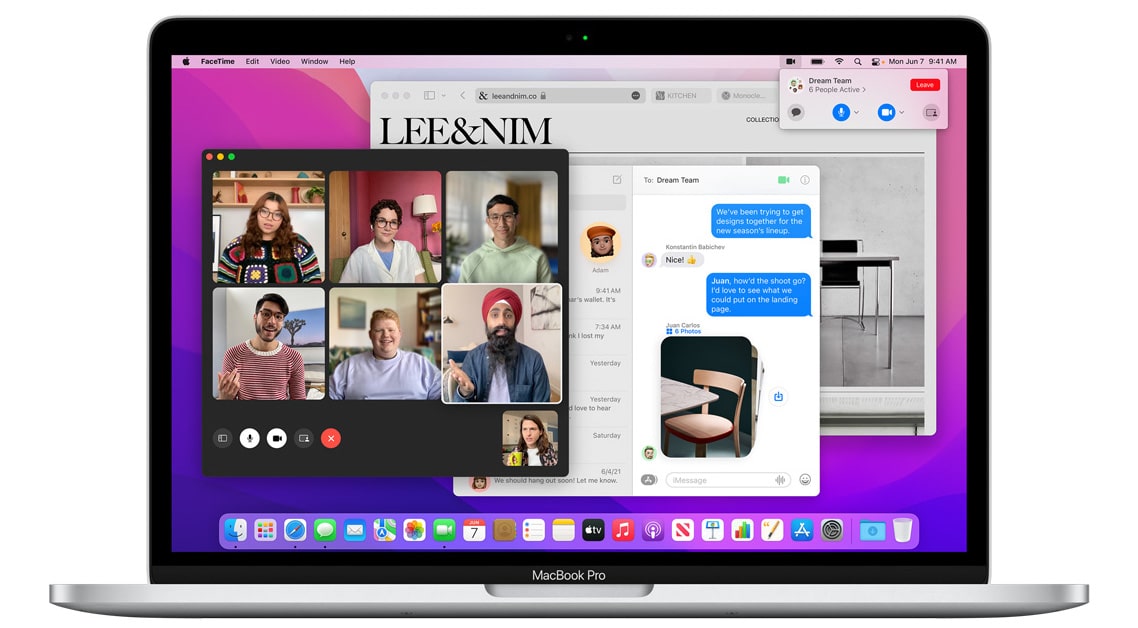Apple will officially release macOS Monterey to the public this morning (October 25), months after announcing the operating system at this year’s Worldwide Developers Conference. Below, we’ve rounded up some of the things you need to know about ahead of its release – including new features that you should try as soon as you install it.

Dozens of improvements to apps
There are dozens of enhancements and improvements to core macOS apps, including on Notes, where you can take advantage of a new Quick Note feature to jot down notes on any app or website systemwide, so you can create context, even on a website in Safari or an address in Maps. You can add Mentions to these new Quick Notes and see other users’ edits in a new Activity View, and categorize your Notes with tags to find them in a new Tag Browser. The new Focus feature on iOS is also coming to the Mac, allowing users to filter out notifications from apps and services unrelated to their current activity. For example, if you’re in Work Mode, you can turn off notifications from friends on WhatsApp and iMessage and only receive alerts from apps such as Slack and Safari. It’s the ideal way to reduce the all-too-common burden of information overload and should help users stay more engaged.
Apple Maps is even better on Mac
Apple has given Apple Maps some attention with this year’s updates and now offers Globe View on the Mac for the first time, better mimicking Google Earth and Maps. Apple says that it offers an “amazing, immersive, and detailed city experience” so that users can navigate and explore the natural world on the large display of the Mac. Live Text comes to the Mac, too, using on-device machine learning to detect text in photos, such as phone numbers, email addresses, websites, tracking numbers, and more, so users can copy and paste content from an image, similar to Google Lens. Visual Lookup allows users to discover and learn about animals, art, landmarks, plants, and more in photos; once you’ve taken a picture at the zoo, your Photos app will help you work out what the animal is.
New iCloud+ features
Apple made some significant changes to iCloud and brings them to the Mac, introducing what it calls iCloud+, offering some premium features that are available to paying iCloud users (or those with Apple One) at no additional cost. These include Hide My Email, which allows you to sign up to services without handing over your personal information, expanded HomeKit Secure Video support, and a new internet privacy service, iCloud Private Relay, which has been incorrectly described as a VPN but instead serves as an extension or companion to a VPN, offering a more private browsing experience on iOS, iPadOS, and macOS. Apple brings Mail Privacy Protection to the Mac, allowing users whether emails can collect information about their Mail activity, and taking a leaf out of iOS 14’s book, the Mac recording indicator now shows which app is accessing the Mac’s microphone.
Cross-platform has never been better
For those who not only own a MacBook but are tied into the Apple ecosystem, the company is rewarding good taste and loyalty with this year’s software updates. New Continuity features have been announced, such as Universal Control, which allows users to work with a single mouse and keyboard and move between their Mac and iPad for a seamless experience. Better yet, no setup is required; you can drag and drop content from your iPad to your iMac and vice versa, ideal if you’re sketching a drawing on Apple Pencil and want it to appear on your Mac. Apple also introduces AirPlay to Mac with this year’s release, allowing users to take advantage of their Mac’s large screen to play, present, and share just about any content from the iPad or iPhone. Whether it’s an important business presentation or vacation photos with the family, you can utilize the Mac’s stunning Retina display and high-fidelity sound system to see your content on the big screen, with no unnecessary setup.
FaceTime enhancements
macOS Monterey introduces several new features that are designed to help you connect and enjoy time with your friends and family, and stay connected to work colleagues. One feature that has received the most attention this year is FaceTime, with Apple introducing spatial audio so that voices sound like they are coming from where the person is positioned on the screen. Voice Isolation also comes to the Mac to ensure that voices are crystal clear; Apple uses machine learning to eliminate background noise, and a new feature called Wide Spectrum allows users to hear all of the sounds in an area; ideal if you’re calling a loved one from a concert or you want a team meeting to be heard on a FaceTime call. Portrait Mode, on the other hand, uses Apple’s Neural Engine with the M1 chip to blue user’s backgrounds to create a stunning video effect, whilst a new Grid View shows participants in same-sized tiles. Taking a leaf out of Disney, Google, and Netflix’s books is SharePlay, a new set of system features that allow users to have shared experiences on a FaceTime call. You can share your favorite music, TV shows, movies, projects, and more with friends and family in real-time, creating watch parties. What’s more, thanks to an API, third parties can offer their own app experiences inside of FaceTime, with Disney+ already supported. Finally, Shared with You allows you to locate content that’s been shared through Messages like videos, articles, photos, and more, and you’ll find the tab inside of the Photos, Safari, Apple Podcasts, Apple News, and the Apple TV apps – ideal for content recommendations.
Are you looking forward to macOS Monterey? Let us know and check back soon for the latest.














